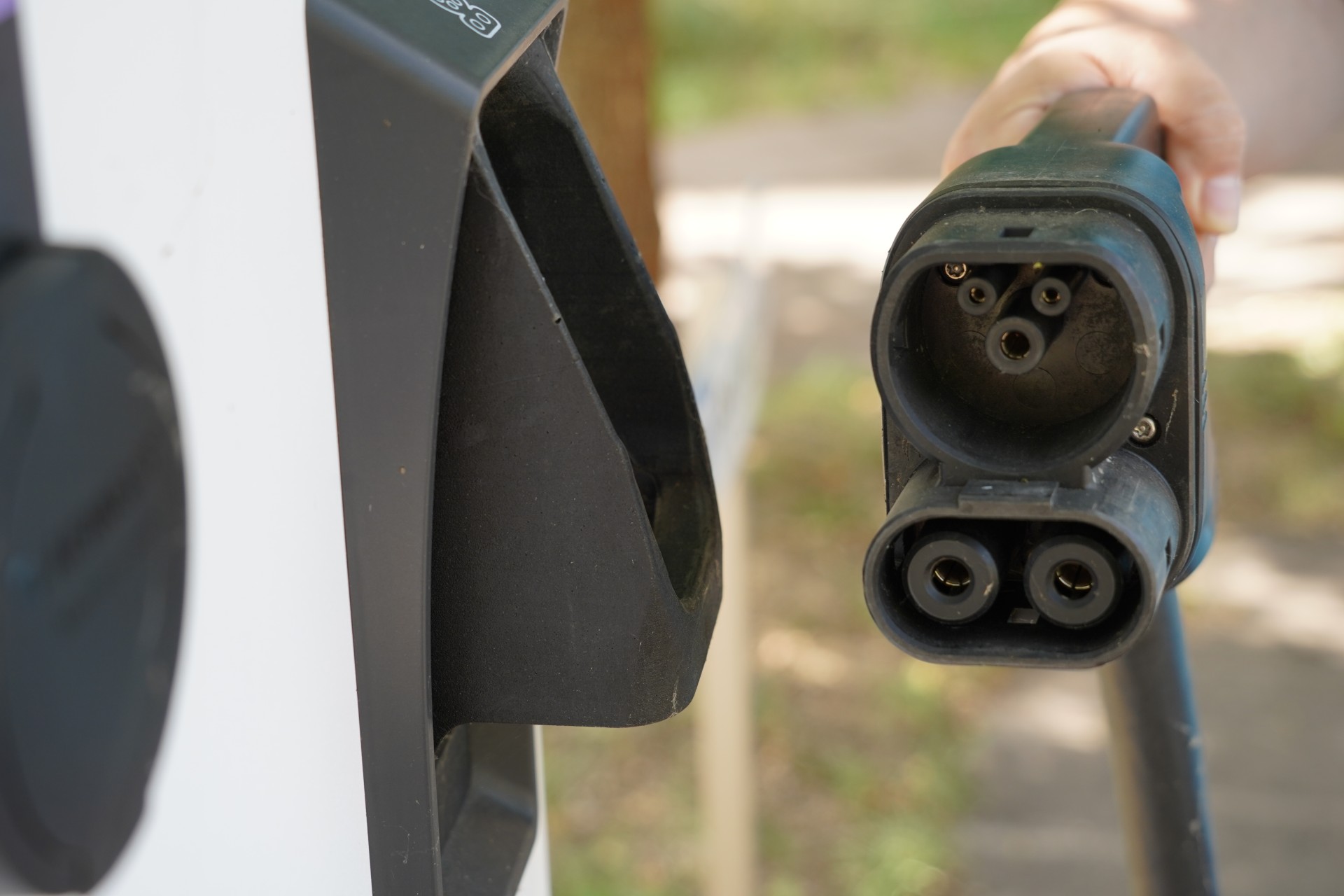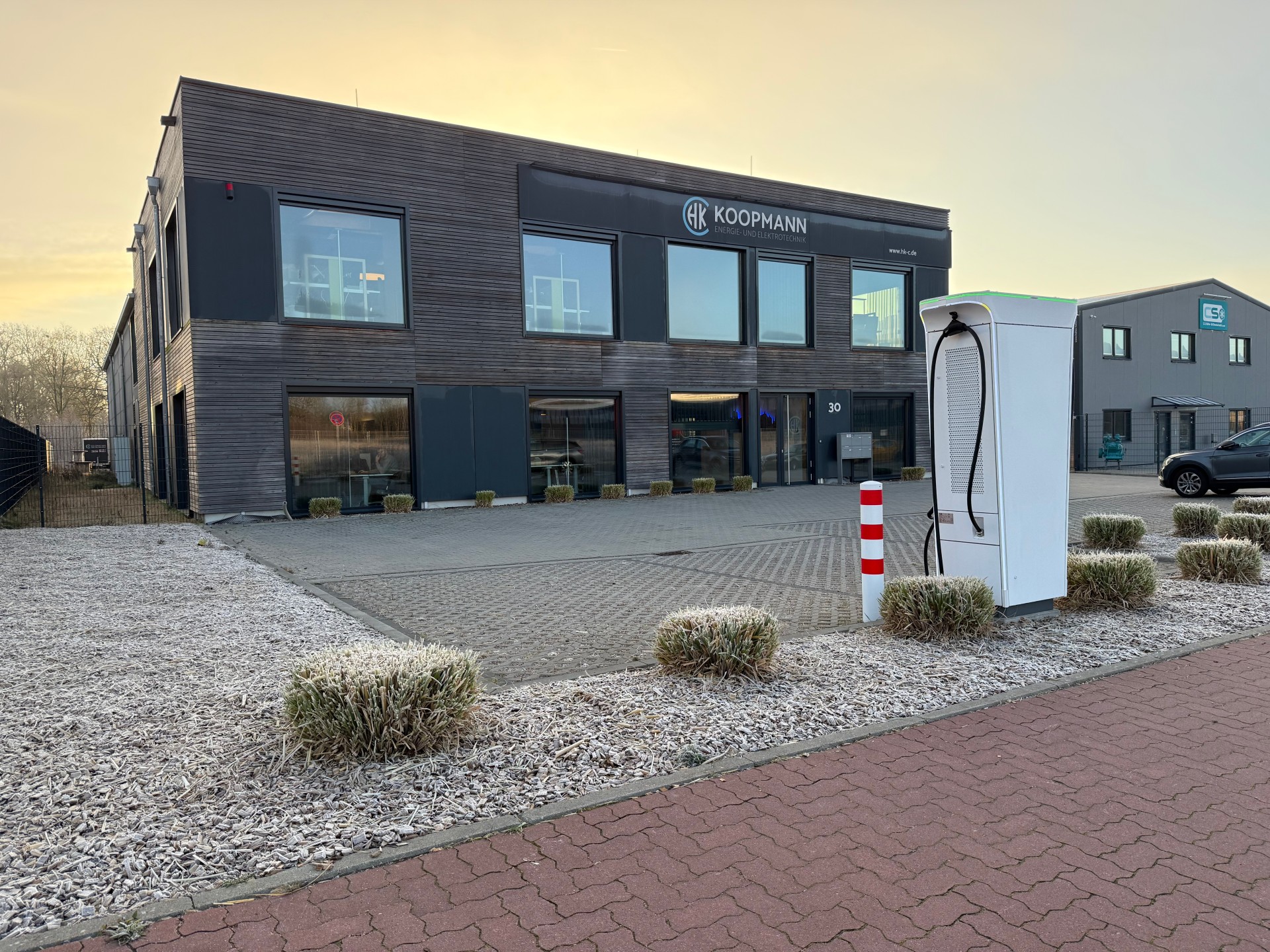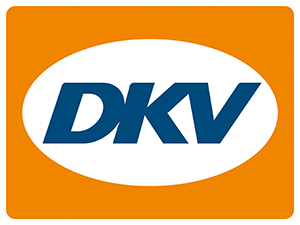DC charging: The turbo for electromobility - why companies should act now

Electromobility is booming - not only for private individuals, but also for companies. However, the requirements for successfully integrating electric vehicles into existing fleets are also growing. An overall concept that takes various factors into account is crucial: from the right choice of vehicle to the right charging infrastructure. Efficiency and reliability play a key role in the commercial sector in particular, as vehicles need to be ready for use again quickly.
DC charging (also known as fast charging) offers a powerful alternative for this: a large amount of electricity can be charged within a short period of time so that electric vehicles can be used again quickly. But what exactly is behind it? What are the advantages of DC charging - and how can you successfully switch to an electrified fleet?
Faster, more efficient, future-proof - how DC charging is revolutionizing electromobility
Charging time is a decisive factor for the practicality of electric fleets. When charging an electric vehicle, a distinction is made between alternating current (AC) and direct current (DC). While in AC charging the electricity is first converted in the vehicle, in DC charging the electricity is transferred directly from the charging station to the vehicle battery. The resulting high charging capacities lead to faster charging times and are therefore indispensable for commercial fleets and commercial vehicles.
With the increasing electrification of vehicle fleets, the need for a sophisticated charging infrastructure is also growing. Companies electrifying their fleets need to plan for the long term and take factors such as grid capacity, load management and billing systems into account.
DC charging infrastructure in practice: the Koopmann company relies on DKV Mobility
One successful example of the implementation of a high-performance DC charging infrastructure is provided by the family-run company Koopmann. The energy technology specialist manages 15 branches in Germany and has almost 500 employees. With the support of DKV Mobility, Koopmann has set up its own DC charging infrastructure and relies on a combination of photovoltaics, load management and a standardized billing solution. In this interview, Tobias Kroner, Head of E-Mobility & Member of the Management Board, provides exciting insights into the challenges and solutions involved in implementing DC charging stations.
Newsroom: As a service provider for generation plants, storage systems and charging infrastructure, you are increasingly focusing on electromobility in your business. You already have electric charging stations at 10 locations, 4 of which have additional DC charging stations. How did you go about planning and implementing your own charging infrastructure?
Tobias Kroner: The aim was to create a future-proof, scalable charging infrastructure. However, the implementation was not without its challenges: Civil engineering work and adjustments to the existing energy supply require precise coordination so as not to disrupt operations. As we did not previously have high energy requirements, the existing transformer station had to be extended and equipped with additional measurement and control technology. Laying the cables under a road was particularly challenging and required extensive civil engineering work.
In addition, we wanted to work with a manufacturer that covers the entire range of charging technology from 11 kW AC to 400 kW DC. ABB, a charging station manufacturer for eectric vehicles, was one of the companies that offered us this opportunity. We have also integrated dynamic load management, which is linked to the DKV Mobility backend for billing.
Newsroom: What factors were decisive in the selection of partners?
Tobias Kroner: Right from the start, we wanted to rely on common standards and not create proprietary solutions. Combining a dynamic load and energy management system with a billing backend was not as easy as we had initially expected. In the initial discussions with DKV Mobility, we jointly determined that cooperation made sense for both sides. Our aim was to understand the systems we were implementing and to optimize processes together with our partners. As a result, we have not only found the ideal solution for us, but can also offer it to our customers.

Koopmann location
Newsroom: Billing is certainly also an important point. How does that work?
Tobias Kroner: That's right, because setting up the charging infrastructure is not enough. One of the biggest challenges was the seamless recording of costs for our vehicle fleet. We wanted a system that covered all use cases - charging at home, at work and on the road. Billing via a central system, no matter where charging takes place, makes our day-to-day work much easier. It's easier for our employees if they can always use the same card for charging - whether they're at home or on the move. Customers and partners can also use our charging stations at individual conditions. This not only reduces costs and ensures flexibility, but also increases the attractiveness for customers, visitors and suppliers.
The close cooperation with DKV Mobility helps us to implement new requirements quickly. If there are technical challenges, the DKV Mobility team contacts the manufacturers directly to find solutions. This makes implementation much easier.
Good to know
- Efficient load management reduces grid connection and electricity costs
- Optimized route planning and clever charging stops help to save costs
- Fast charging infrastructure at your own company increases the attractiveness of the location through individual pricing for partners, guests and suppliers
- An early decision in favor of charging points that comply with calibration law or an expandable infrastructure at the location saves high costs for retrofitting or grid connections later on
Conclusion: Why a DC charging infrastructure is worthwhile for companies
DC charging stations are essential to ensure that electromobility remains viable for the future. Without a comprehensive and efficient fast-charging infrastructure, the use of electric vehicles would be impractical for many. The example of Koopmann shows that companies with the right charging infrastructure, intelligent load management and an uncomplicated billing solution can successfully implement the switch to electromobility, reduce energy costs and optimize operational processes.
Therefore, if you want to make your company fit for electromobility, you should not only invest in charging infrastructure but also rely on a holistic concept.
